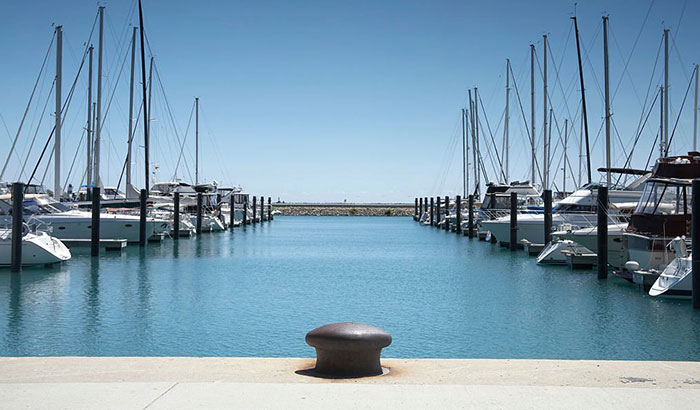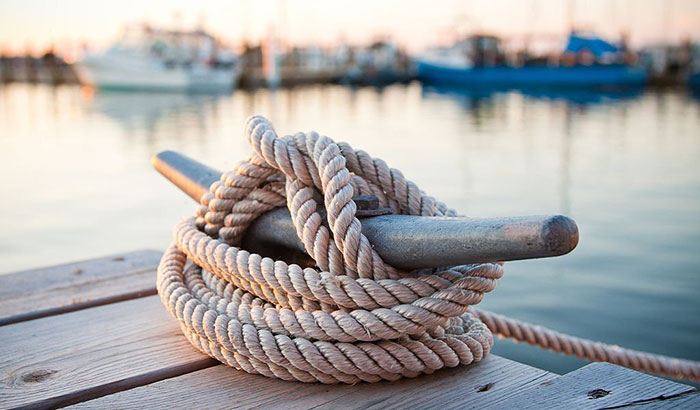As a professional boat captain, one of the most frequent questions I get asked is whether or not it’s possible to anchor a boat anywhere.
There are a lot of factors that go into anchoring a boat and where you can do so safely. Different boats have specific requirements when anchoring. Besides, there are the weather conditions and location; both play a role in what’s the best spot to park your vessel.
Here are some tips on how to anchor your boat safely and effectively.
Contents
Can You Anchor A Boat Anywhere?
Unfortunately, you cannot just drop your anchor in the middle of anywhere.
You can anchor at a certain area while meeting the first critical condition. It is that your anchor rod/cable must have sufficient length to reach the depth of that body of water.
Let’s discuss the match: the rod length must be at least eight times longer than the deepest part of the water. With that, it is impossible to anchor your boat right in the middle of the ocean.
But that’s just one thing.
The second condition is the area or location does not have anchoring restrictions. If you are new to boating life, you might not know that many places do not allow boats to stay for various reasons.
For instance, you are not allowed to anchor your ship within a 100-feet distance from a public mooring’s boundary lines.
The third thing is your anchoring location must follow the written and unwritten anchoring etiquette.
You cannot anchor in close proximity to any boatyard and marina or launching vessel. The safe distance should be more than 150 feet. Furthermore, you should always go to the anchorage area at a low speed and respect the boats already anchored there.
How to Pick the Best Spot to Anchorage Safely?
Still, just because you can, at a certain place, drop an anchor doesn’t mean you should.
There are a few things to consider before hitting the brakes and letting your vessel drift. Here are some things you must consider:
Boat Dimensions
The size and weight of your boat will play a role in where you can safely anchor. Heavier boats will need more depth to set their anchors, while lighter craft can get by in shallower water.
Weather Conditions and Water Current
Before anchoring, always check the forecasted weather conditions. If there’s a chance of high winds or severe weather, it’s best to find a different spot or wait it out.
Don’t anchor in an area known for strong currents either, as they can quickly move your boat around and strain the anchor.
Location, Location, Location
Not all bottom types are created equal. Sand and mud are the best for anchoring, while grass and rocks can be more difficult.
If you’re unsure about the bottom type, it’s always best to err on the side of caution and pick a different spot.
It would help if you also avoided areas with a lot of traffic, as boats passing by can create wakes that can damage your vessel or loosen the anchor.
Frequently Asked Questions
How to Anchor my Boat?
Once you’ve found a safe spot to anchor, follow these steps:
- Cast off from the dock or mooring line. Make sure you have enough room to maneuver before doing this – it’s best not to be too close to other boats when casting off
- Steer the boat into the wind or current. This step will help keep it in place once you drop anchor
- Drop the anchor carefully. Make sure the chain is all the way out, and that the anchor is securely fastened before letting go
- Set the brake or put the boat in gear. It will help keep the boat from drifting away from the anchor
- Check your position periodically to make sure you’re still anchored securely. If you start to drift, simply adjust the boat’s position accordingly
What Should be Avoided When Anchoring?
A boat is only as secure as its anchor.
This means that if you want to ensure the safety of your vessel, it’s important to use a reliable and effective anchor. However, you should avoid a few things when anchoring your boat to increase your chances of success.
- One of the most important things to remember is not to overload your anchor. It means using too much weight or chain, making it difficult for the anchor to set correctly.
- It’s also important not to use too little weight or chain, as this can lead to the anchor being pulled out of the ground.
- Another mistake that people often make is using the wrong type of anchor for the conditions. For example, a heavy anchor might be necessary for a deep anchorage. Still, it would be ineffective in a shallow area.
- It’s also essential to choose the right size anchor for your boat, as this will ensure that it can hold steady in the wind and waves.
- Finally, it’s important to remember that an anchor is only as good as its placement. It means taking the time to find a good spot for your boat, and ensuring that the anchor is set properly. If you’re not sure how to do this, you can ask a local expert for help.
Where Should you Avoid Anchoring?
There are a few places where you should avoid anchoring.
- First, don’t anchor in areas with high water flows; the current will quickly move your boat and can potentially cause damage or injury
- Second, avoid anchoring in shallow water – you may run aground or damage your boat
- Third, don’t anchor near underwater obstacles like rocks or coral – they can easily snag your anchor or chain and pull your boat off-course
- Finally, be careful when anchoring in windy conditions; if you’re not careful, your anchor could drag and take your boat with it
Conclusion
Anchoring a boat may seem like a simple task, but it can be more complicated than you think.
There are many factors to consider when anchoring, especially at night, and if you’re not careful, your boat could end up in trouble. By following these tips, though, you can anchor your boat safely and securely.
Have you tried anchoring your boat in different ways? What has worked best for you? Tell us in the comment section below. And feel free to share the article with your fellow boaters.


